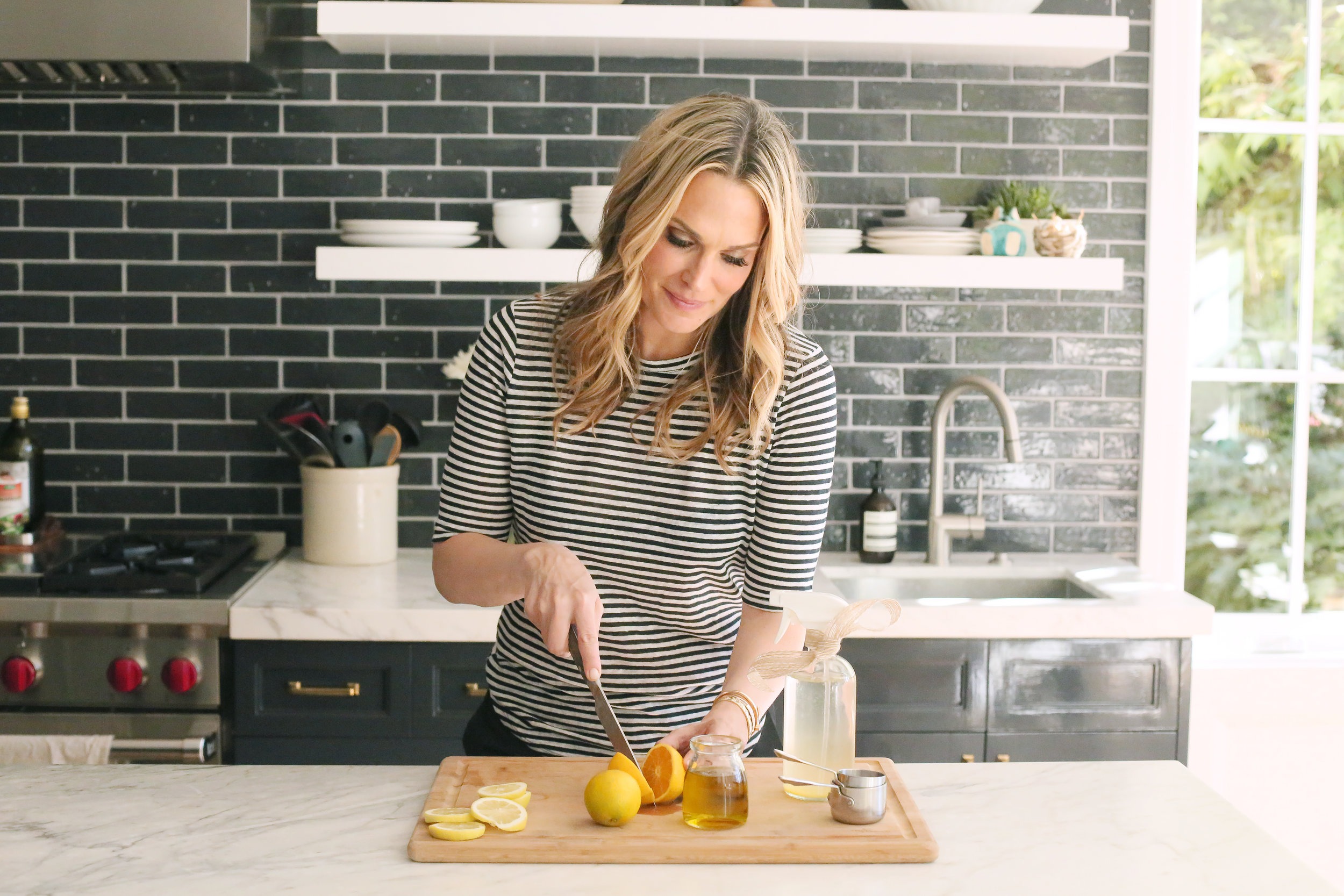Beauty...

We all know that April is the beginning of spring and spring cleaning! I spoke a little about keeping my space clean, green and glam. But today I’m sharing some of my clean green DIY household cleaners!

While I know there is nothing like bleach to get your whites white, I generally avoid it when doing laundry because I don’t want it anywhere near my children’s skin. I also avoid using bleach in the kids’ bathrooms and bathtubs because those are for momma- and- baby time. “Better Than Bleach” is a great alternative that you can use in most cleaning scenarios that would typically call for whitening and brightening. While I still will use bleach occasionally in my kitchen and bathroom when necessary, this is my choice for everyday kind of use.
Yield: About 1/2 gallon
Ingredients:
12 drops citrus essential oil
(lemon or grapefruit)
1/2 cup lemon juice
1/2 cup hydrogen peroxide
7 cups water
Directions:
Whisk together all the ingredients in a small clean pail, then transfer to a 1/2- gallon dark, glass bottle. Label and date.

When you have little ones crawling around on your floors, you start to think a lot about the safety of the wood cleaner you’re using. Here’s my to- go nontoxic recipe for wood floors and furniture.
Yield: About 1 1/2 cups
Ingredients:
Juice from 1/2 lemon
4 drops of your favorite essential oil (I love anything citrusy or lavender)
1 cup olive oil
2 tablespoons white vinegar
Directions:
Whisk all the ingredients together in a small bowl, then transfer to a spill- proof container. Use an old clean dish towel as an applicator. Label and date.
This all- purpose surface cleaner is great for kitchens, bathrooms, and glass and tile surfaces, and it also works well on mildew, mineral deposits, and general grime. Steer clear of using it on stone or marble surfaces, since the vinegar is acidic and can eventually cause degradation or etching. (Trust me, I learned this the hard way.)
Yield: About 3 cups
Ingredients:
6 drops essential oil (I love lavender, mint or neroli)
1 1/2 cups hot water
1 1/2 cups distilled white vinegar
Directions:
Whisk together and store in a dark, glass bottle with a spray top. Label and date.
Tip: Always label and date your DIY products. Nobody likes a mystery product intheir cleaning cupboard.
1. TAKE THE LESS PLASTIC PLEDGE. Plastic is not so fantastic because it’s not biodegradable and it contains some suspicious chemicals. We try to use glass containers for storing food, stainless- steel bento boxes for the kids’ lunches, and glass baby bottles (or BPA- free plastic baby bottles as an alternative when we’re on the go).
2. BANISH PAPER TOWELS. We try hard to use cloths and rags for cleanup rather than grabbing paper towels. They’re so wasteful. I turn old T- shirts into rags for a more earth- friendly means of cleaning up. I also try to use cloth instead of paper napkins when I can.
3. SAY NO TO PAPER AND PLASTIC BAGS. I opt for reusable tote bags for grocery shopping and canvas bags for the kids’ lunches. I keep a stash in the car for emergencies.
4. ELIMINATE THE CHEM- HEAVY DRYER SHEETS. I line- dry clothes when I can (which saves on the electric bill too), and when I can’t I use all- natural wool dryer balls.
5. RECYCLE! I know this kind of goes without saying, but it doesn’t hurt as a reminder. It’s never too early to teach your kids to recycle. Even little kids can get into it and will love learning to put glass, paper, plastic, and so on into designated colored bins. Have your children save them up, take them to your local recycling center— and let them cash them in. This not only teaches them the value of recycling but also that there is a little reward in it for them to. It’s a win– win.
6. CHOOSE ORGANIC FABRICS AND MATTRESSES. When it comes to our linens, our children spend so much time sleeping on them, we definitely go with organic bedding and mattresses. It’s better for the environment and for them.

Do you have any DIY cleaning products? I’d love to give them a try! Let me know below!
xox
